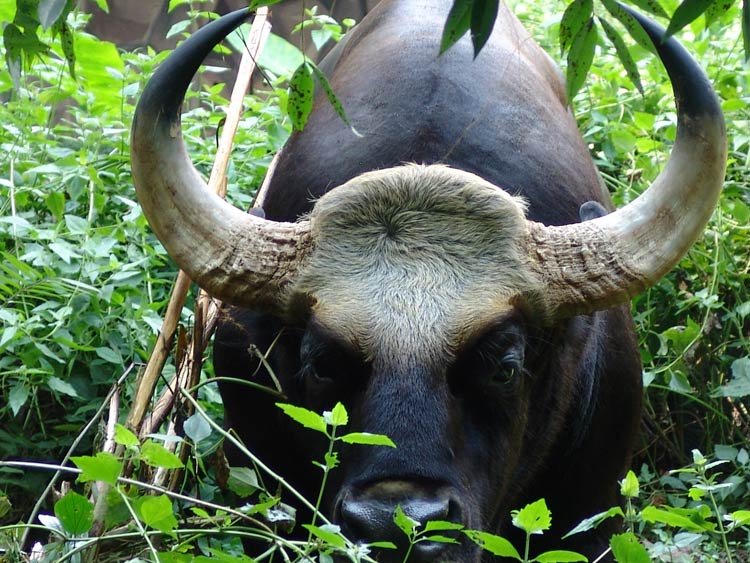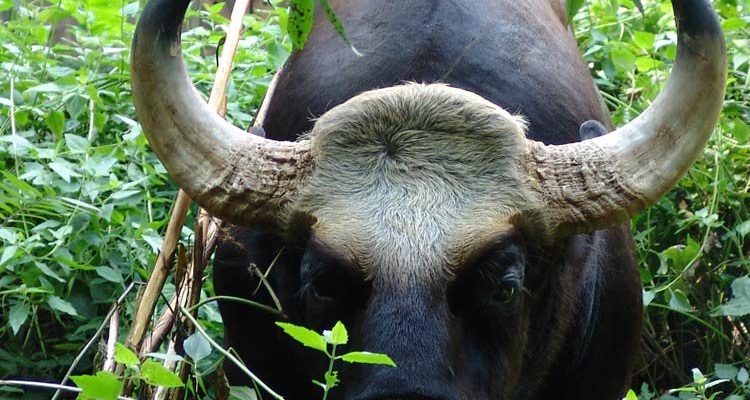
So let’s dive into a few animals that resemble the gaur. We’ll explore their unique characteristics, discuss how to identify them, and even share some fun facts along the way. By the end, you might be surprised by how diverse and interesting these animals truly are!
1. Bison
Bison are often confused with gaurs due to their similar size and shape. These massive animals roam the grasslands of North America, and they’re known for their shaggy fur, which can be dark brown to light tan. The most notable difference is in their horns; bison have short, curved horns compared to the gaur’s long, curved ones.
Bison are also generally stockier than gaurs, with thicker necks and more pronounced humps. When you see them in herds, you might notice their distinctive behaviors, like rolling in the dirt—a way to keep pests at bay.
Fun fact: Did you know that bison can run up to 40 miles per hour? That’s pretty fast for such a large animal!
2. Yak
Yaks are another close cousin of the gaur. Native to the Himalayan region, these shaggy animals thrive in high altitudes. They might look similar with their heavy build and curved horns. However, they have longer hair that drapes over their bodies, giving them a fluffy appearance.
If you look closely, the yak’s nose is more pronounced and often has a bit of a beard! Besides their appearance, yaks are also quite different in temperament. They’re known for their calm nature, making them perfect for herding and farming purposes in tough climates.
Ever seen a yak’s magnificent fur? It’s not just for show; it keeps them warm in frigid temperatures!
3. Water Buffalo
Water buffaloes are fascinating animals that share some similarities with gaurs, especially in body size and shape. Typically found in Asia, they sport powerful bodies and large horns that curve outward. However, the water buffalo’s horns differ in that they often form a spiral shape.
When spotting a water buffalo, you’ll notice they often wallow in mud. This behavior helps them cool down and protects their skin from insects and sunburn. If you get a chance to see one up close, you’ll be amazed by their strong build and gentle demeanor.
Here’s something interesting: water buffaloes are often used in agriculture for plowing fields!
4. Banteng
Banteng, or wild cattle native to Southeast Asia, are another close relative of the gaur. They have a similar structure, but banteng are typically smaller and have a sleeker appearance. Their coat can vary in color, from reddish-brown to black, and males often have distinctive white markings around their legs.
While the gait and stature may remind you of the gaur, banteng are more agile and lighter on their feet. This speed helps them evade predators in the wild. If you see a herd of banteng, you’ll likely notice they’re quite social, often feeding in groups.
Fun tidbit: Bantengs are also known for their impressive leaping ability—if they need to escape danger, they can jump high!
5. Domestic Cattle
Domestic cattle are far removed from the wildness of the gaur, but they share some striking similarities. Most notably, their body shape and overall size can be quite alike, especially in certain breeds like the Angus or Hereford. These cows can sometimes be seen in farms or open fields, making them a common sight.
However, domestic cattle tend to have a more docile demeanor compared to the gaur. Their horns, if present, are generally smaller and vary greatly depending on the breed. One key difference to note is their environment—while gaiurs are wild and roam vast territories, domestic cattle are usually kept in farms for milk and meat production.
Did you know? Domestic cattle can actually recognize faces, both human and animal!
6. Malayan Banteng
You might be wondering, “Aren’t bantengs already covered?” Well, the Malayan banteng is a unique subspecies. While they share some characteristics with the typical banteng, they tend to be darker and have a more robust build. They’re mostly found in the forests of Malaysia and Indonesia.
These animals are important for their ecosystems, helping to maintain the vegetation balance in their habitats. Identifying a Malayan banteng can be tricky, but their darker fur and slightly larger stature might give them away.
An interesting feature of the Malayan banteng is their social structure—they often live in mixed herds of males and females, unlike many other species that separate by gender.
7. Gaur’s Close Relative: The Wild Yak
While we already talked about yaks, it’s worth mentioning the wild yak as a close relative. These creatures often inhabit the high plateaus of Tibet and surrounding regions. They share physical similarities with gaurs but have longer, shaggy fur and are typically smaller in size.
Wild yaks are adapted to harsh climates, using their thick coats to keep warm. One way to spot a wild yak is by its large herd size, which can number in the hundreds! They’re majestic animals, often grazing on tough grasses found in their rugged terrain.
Have you ever seen a wild yak? Their large, expressive eyes seem to hold many stories!
8. African Buffalo
The African buffalo might be another contender that looks similar to the gaur at first glance. They have a robust build and are known for their fierce nature. However, their horns are distinctly different. African buffalo horns are wide and have a unique shape that resembles a “boss” on their foreheads.
These animals are social creatures, often forming large herds with complex social structures. They can be seen in various habitats across Africa, from savannas to forests. While they may share some similarities, spotting the differences in their horns and behavior can help you tell them apart.
One cool fact about African buffalo is that they have excellent memories, often remembering specific regions or individuals in their herds.
9. Taurine Cattle
Moving back to domestic cattle, taurine cattle are worth mentioning for their resemblance to the gaur. Found primarily in Europe, they have a strong body and can be quite large. Their appearance can resemble that of the gaur, especially with their stocky build.
When trying to identify taurine cattle, look for their short and curved horns. They are also often found in livestock farms, bred for a variety of agricultural purposes. Unlike the gaur, taurine cattle have a more varied color palette, showcasing different shades of black, brown, and white.
Fun fact: Taurine cattle have been domesticated for thousands of years and played a significant role in human agriculture!
10. Nilgai
Last but not least, the nilgai, or blue bull, is an intriguing species that you might encounter in India. Despite being smaller than the gaur, nilgais have a similar muscular build and long legs, which gives them a graceful appearance. Their unique blue-gray coat makes them stand out in the wild.
While they have a different shape and size, their long legs and overall structure may remind you of the gaur. Nilgais tend to be more shy and elusive, preferring open grasslands and scrub forests.
Did you know? Nilgais can run at impressive speeds, thanks to their long legs, making them formidable in the wild!
As we wrap up this exploration of animals similar to the gaur, it’s clear that the animal kingdom is diverse and full of surprises. Whether you’re at a zoo, on a safari, or just curious at home, knowing these differences can enrich your understanding of the wildlife around us. Next time you encounter one of these magnificent creatures, you’ll have a little more knowledge to appreciate their uniqueness!

